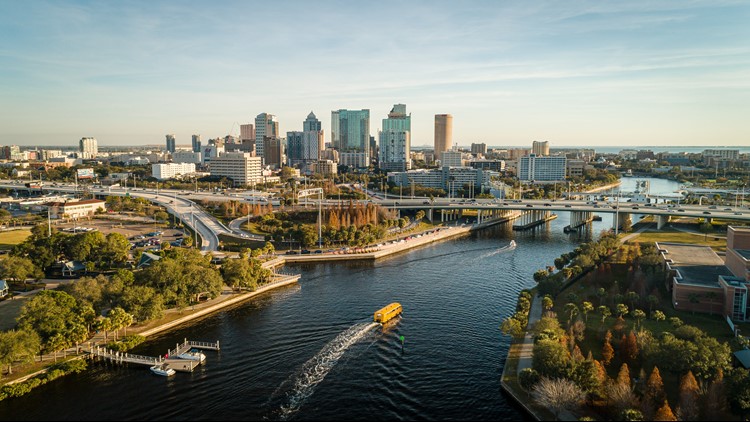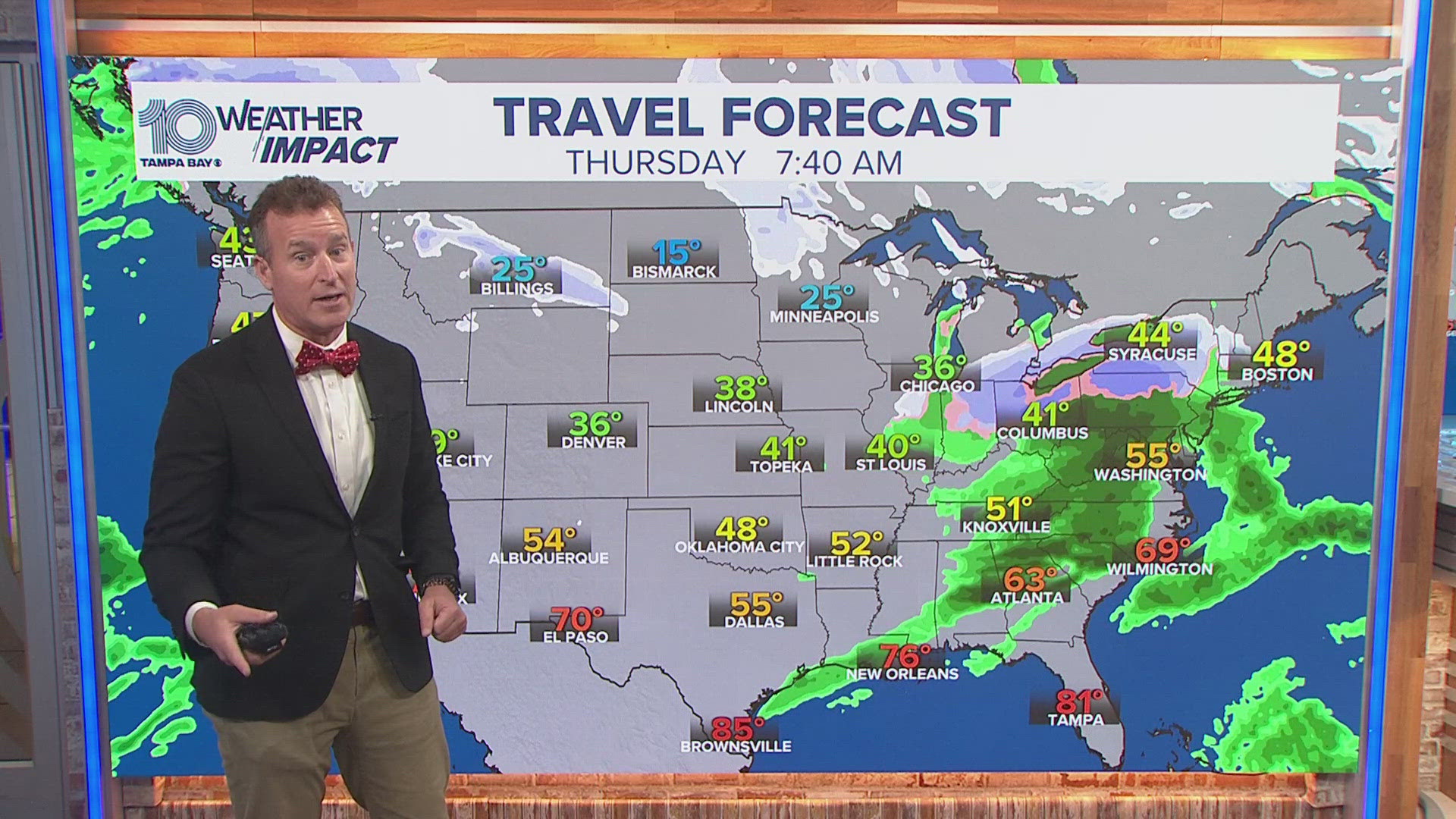TAMPA, Fla. — Depending on where you live in the Tampa Bay area, it could be up to 9 degrees hotter than the area's given forecast because of the urban heat island effect. This concept states that cities are bound to be hotter because buildings, roads and other heat-absorbing infrastructure replace vegetation in those areas.
The nonprofit organization Climate Central analyzed urban heat hot spots and Tampa was one of them. Researchers calculated the urban heat index, or UHI, in census block groups across cities. The index values are estimates of how much the urban built environment boosts temperature, so it's the additional heat residents feel in cities.
In Tampa, the urban heat index was 9 degrees meaning on a day where the temperature is 90 degrees in a more rural area, people living or working in a Tampa neighborhood with that UHI value would experience temperatures of at least 99 degrees.
According to Climate Central's research, 336,340 people in Tampa experience an urban heat index of 8 degrees or higher, which is 87% of the total population.

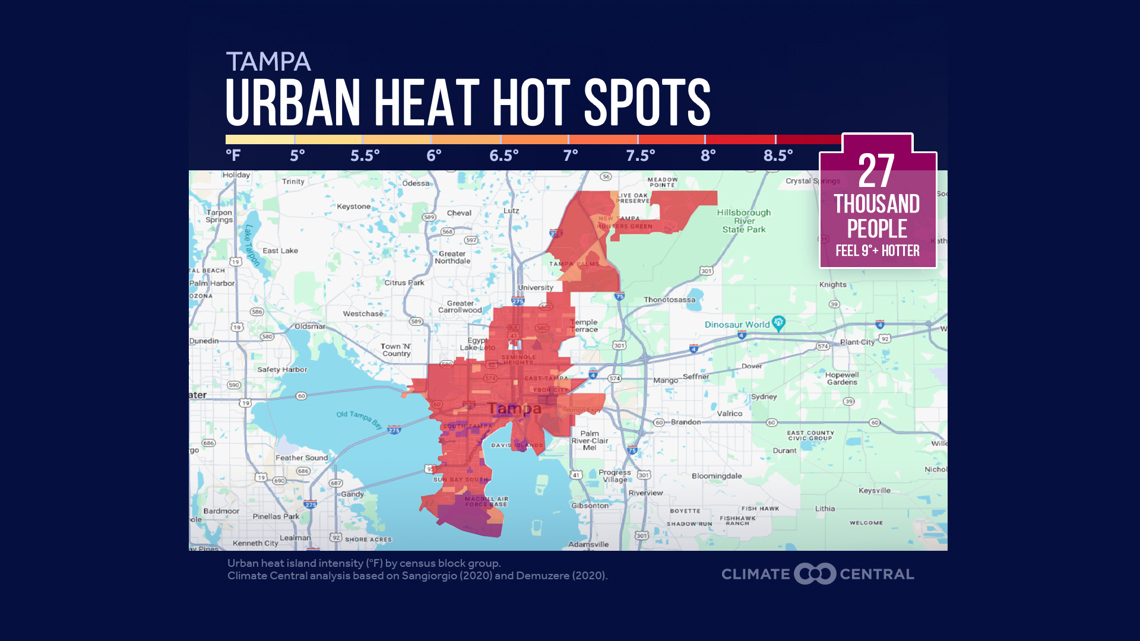
Facts that contribute to the index values include:
- Albedo: The fraction of incoming solar radiation reflected by a surface. Hard, dark surfaces like roads and buildings have low albedo meaning they absorb sunlight and radiate it back into the city as heat
- Percentage of green space: Plants help cool the air so less vegetation means less cooling
- Population density: Extra heat can come from human activities such as transportation, industrial facilities and air conditioning
Other cities in the state that are hotspots include Miami, West Palm Beach, Fort Myers, Orlando and Jacksonville. Across the country, cities included New York, Los Angeles, Houston, Chicago, San Antonio and Dallas among many others.

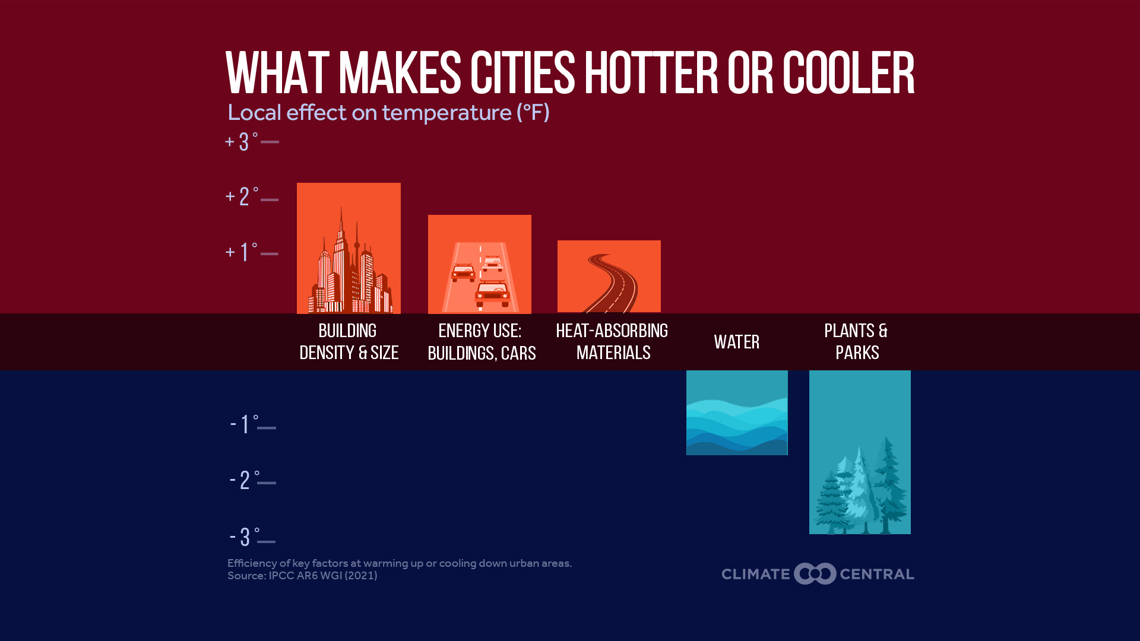
Unequal heat
Some neighborhoods are also hotter than others due to structural inequities. People of color and those living below the property line are disproportionately exposed to urban heat island intensity, according to a 2021 study.
Tampa is a city where there is unequal urban heat with additional summer heat being 5-10 degrees hotter in formerly redlined neighborhoods, according to Climate Central. Redlining was a racially bias concept established during the 1930s by the federal government that would deny access to mortgages to neighborhoods, according to the University of Richmond.

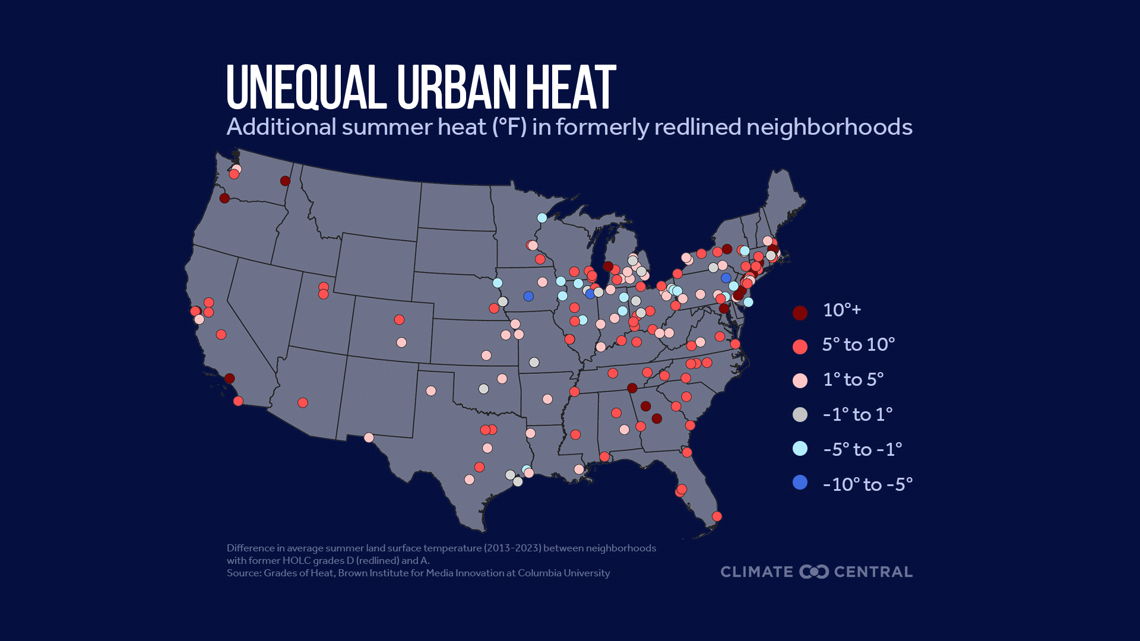
Although redlining was outlawed in 1968, communities still feel its effects. In 84% of cities in the United States, historically redlined areas currently experience hotter summer temperatures. Across those cities, the average additional temperature increase was 6.5 degrees hotter.
Solutions for cooler cities
- Planting trees
- Green roofs or rooftop gardens
- Cool roofs made of highly reflective and emissive materials
- Cool pavements that are reflective or permeable to reduce surface temperatures
Here are a few things you can do to stay cool
- Close your blinds and curtains during the day
- Place a cold washcloth or ice pack on your pulse points
- Place ice buckets in front of a fan
- Drink plenty of water
- Wear lightweight, light-colored and loose-fitting outfits.


